Metal-free ribonucleotide reduction powered by a DOPA radical in Mycoplasma pathogens
- PMID: 30429545
- PMCID: PMC6317698
- DOI: 10.1038/s41586-018-0653-6
Metal-free ribonucleotide reduction powered by a DOPA radical in Mycoplasma pathogens
Abstract
Ribonucleotide reductase (RNR) catalyses the only known de novo pathway for the production of all four deoxyribonucleotides that are required for DNA synthesis1,2. It is essential for all organisms that use DNA as their genetic material and is a current drug target3,4. Since the discovery that iron is required for function in the aerobic, class I RNR found in all eukaryotes and many bacteria, a dinuclear metal site has been viewed as necessary to generate and stabilize the catalytic radical that is essential for RNR activity5-7. Here we describe a group of RNR proteins in Mollicutes-including Mycoplasma pathogens-that possess a metal-independent stable radical residing on a modified tyrosyl residue. Structural, biochemical and spectroscopic characterization reveal a stable 3,4-dihydroxyphenylalanine (DOPA) radical species that directly supports ribonucleotide reduction in vitro and in vivo. This observation overturns the presumed requirement for a dinuclear metal site in aerobic ribonucleotide reductase. The metal-independent radical requires new mechanisms for radical generation and stabilization, processes that are targeted by RNR inhibitors. It is possible that this RNR variant provides an advantage under metal starvation induced by the immune system. Organisms that encode this type of RNR-some of which are developing resistance to antibiotics-are involved in diseases of the respiratory, urinary and genital tracts. Further characterization of this RNR family and its mechanism of cofactor generation will provide insight into new enzymatic chemistry and be of value in devising strategies to combat the pathogens that utilize it. We propose that this RNR subclass is denoted class Ie.
Conflict of interest statement
The authors declare no competing interests.
Figures
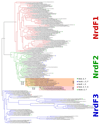




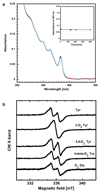
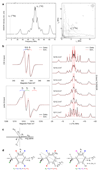
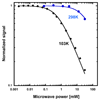



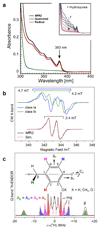

Similar articles
-
Metal-free class Ie ribonucleotide reductase from pathogens initiates catalysis with a tyrosine-derived dihydroxyphenylalanine radical.Proc Natl Acad Sci U S A. 2018 Oct 2;115(40):10022-10027. doi: 10.1073/pnas.1811993115. Epub 2018 Sep 17. Proc Natl Acad Sci U S A. 2018. PMID: 30224458 Free PMC article.
-
Characterization of a second class Ie ribonucleotide reductase.Commun Biol. 2025 Feb 22;8(1):281. doi: 10.1038/s42003-025-07565-3. Commun Biol. 2025. PMID: 39987380 Free PMC article.
-
The radical site in chlamydial ribonucleotide reductase defines a new R2 subclass.Science. 2004 Jul 9;305(5681):245-8. doi: 10.1126/science.1098419. Science. 2004. PMID: 15247479
-
Structure, function, and mechanism of ribonucleotide reductases.Biochim Biophys Acta. 2004 Jun 1;1699(1-2):1-34. doi: 10.1016/j.bbapap.2004.02.007. Biochim Biophys Acta. 2004. PMID: 15158709 Review.
-
Harnessing free radicals: formation and function of the tyrosyl radical in ribonucleotide reductase.Trends Biochem Sci. 1998 Nov;23(11):438-43. doi: 10.1016/s0968-0004(98)01296-1. Trends Biochem Sci. 1998. PMID: 9852763 Review.
Cited by
-
Redox-controlled reorganization and flavin strain within the ribonucleotide reductase R2b-NrdI complex monitored by serial femtosecond crystallography.Elife. 2022 Sep 9;11:e79226. doi: 10.7554/eLife.79226. Elife. 2022. PMID: 36083619 Free PMC article.
-
Mechanoradicals in tensed tendon collagen as a source of oxidative stress.Nat Commun. 2020 May 8;11(1):2315. doi: 10.1038/s41467-020-15567-4. Nat Commun. 2020. PMID: 32385229 Free PMC article.
-
Collagen breaks at weak sacrificial bonds taming its mechanoradicals.Nat Commun. 2023 Apr 12;14(1):2075. doi: 10.1038/s41467-023-37726-z. Nat Commun. 2023. PMID: 37045839 Free PMC article.
-
Why is manganese so valuable to bacterial pathogens?Front Cell Infect Microbiol. 2023 Feb 3;13:943390. doi: 10.3389/fcimb.2023.943390. eCollection 2023. Front Cell Infect Microbiol. 2023. PMID: 36816586 Free PMC article. Review.
-
Insights into the Thermodynamics and Kinetics of Amino-Acid Radicals in Proteins.Annu Rev Biophys. 2022 May 9;51:453-471. doi: 10.1146/annurev-biophys-100521-103031. Epub 2022 Feb 8. Annu Rev Biophys. 2022. PMID: 35133854 Free PMC article. Review.
References
-
- Nordlund P, Reichard P. Ribonucleotide reductases. Annu Rev Biochem. 2006;75:681–706. - PubMed
-
- Aye Y, Li M, Long MJC, Weiss RS. Ribonucleotide reductase and cancer: biological mechanisms and targeted therapies. Oncogene. 2015;34:2011–2021. - PubMed
-
- Brown NC, Eliasson R, Reichard P, Thelander L. Nonheme iron as a cofactor in ribonucleotide reductase from E. coli. Biochem Biophys Res Commun. 1968;30:522–527. - PubMed
Publication types
MeSH terms
Substances
LinkOut - more resources
Full Text Sources
Molecular Biology Databases

